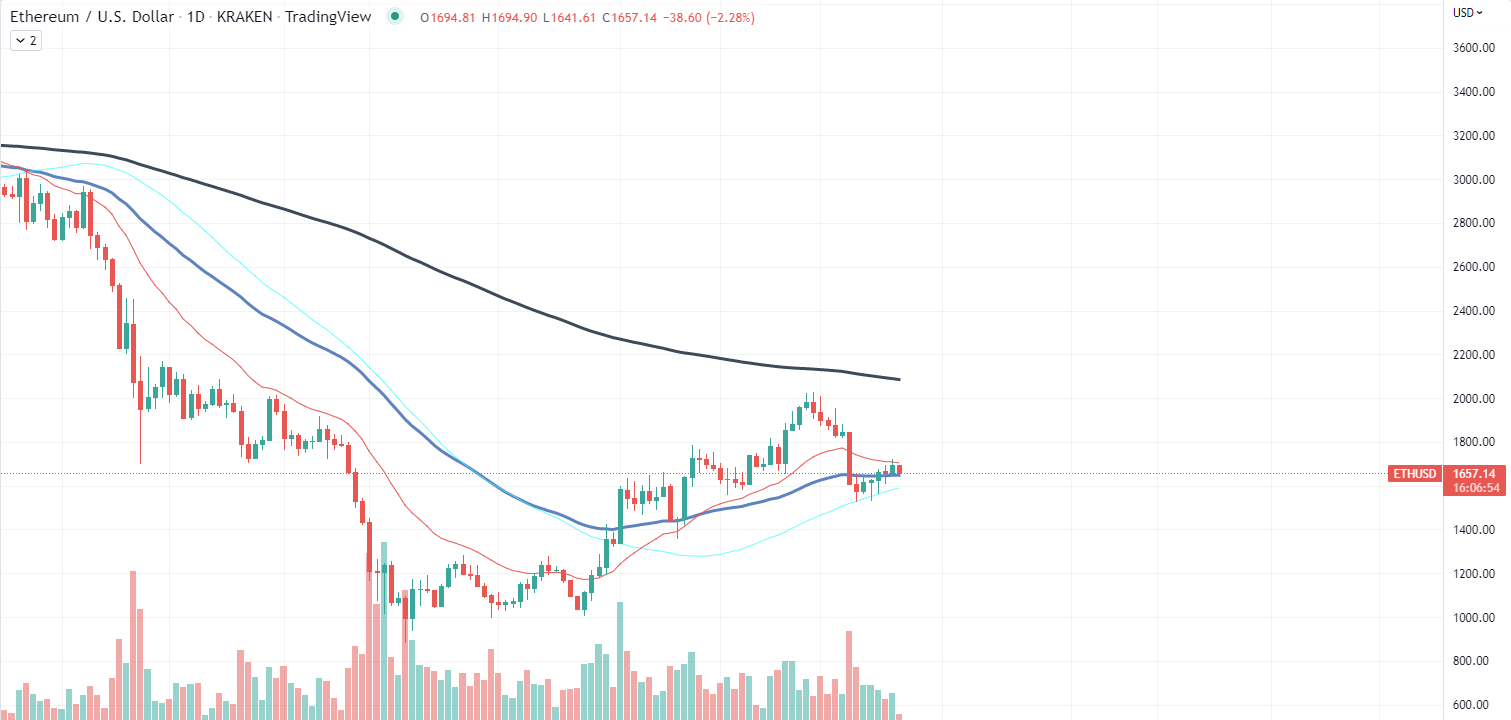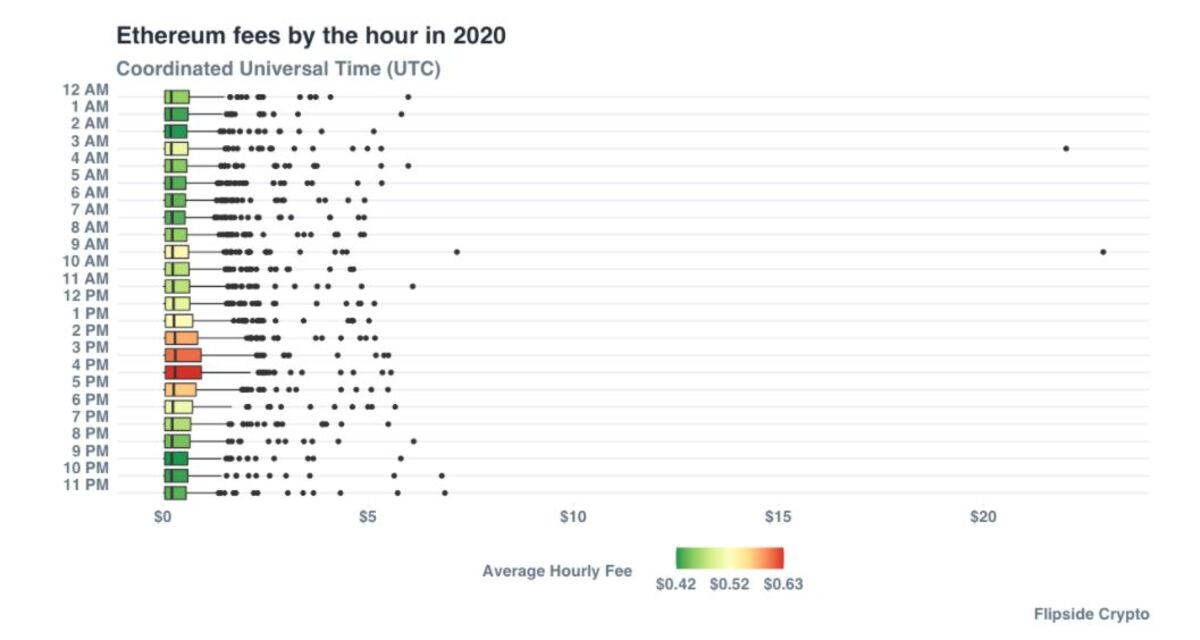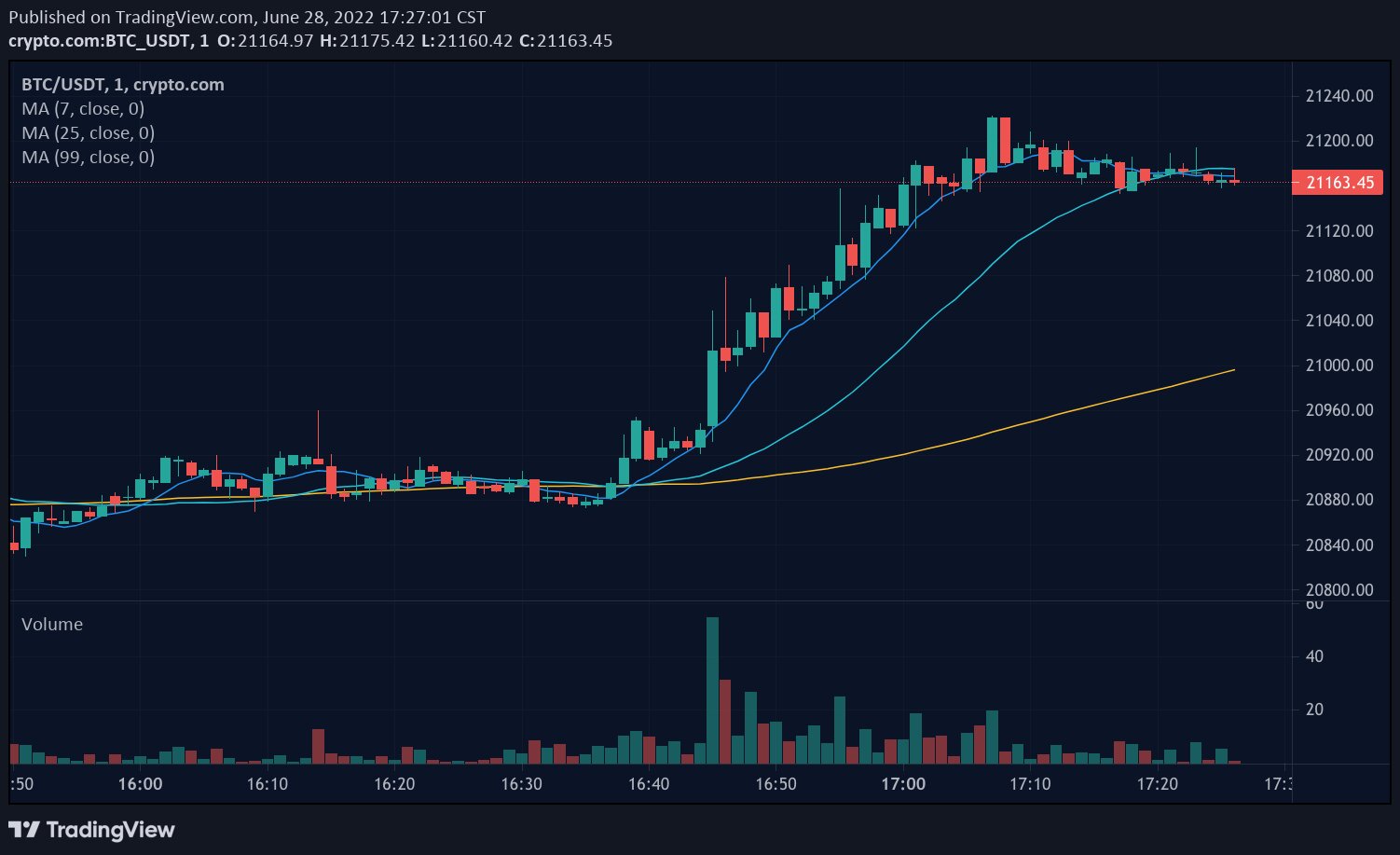Introduction
Ethereum, the second-largest cryptocurrency by market capitalization, has experienced a significant surge in its price and popularity in recent months. This sudden spike has left many investors and analysts wondering what factors have contributed to Ethereum’s impressive rally.
While there may be various reasons behind this surge, it is important to recognize the broader context in which Ethereum operates. As a decentralized blockchain platform, Ethereum not only facilitates the transfer of digital currency but also enables the development and execution of smart contracts. This unique functionality has attracted widespread attention and has positioned Ethereum as a leading player in the blockchain space.
However, to truly understand the recent surge in Ethereum’s value, it is crucial to examine several key factors that have come into play. These factors include the decentralized finance (DeFi) boom, Ethereum’s upgrades and developments, increased institutional interest, Bitcoin’s bull run and market sentiment, the emergence of central bank digital currencies (CBDCs), scalability and layer 2 solutions, and network fees and gas prices.
By delving into these factors, we can gain a comprehensive understanding of why Ethereum has witnessed such a significant spike and what the implications may be for the future of the cryptocurrency market.
Decentralized Finance (DeFi) Boom
The decentralized finance (DeFi) sector has emerged as a key driver behind Ethereum’s recent price surge. DeFi refers to a variety of financial applications that operate on decentralized blockchain networks, utilizing smart contracts.
One of the defining features of DeFi is its potential to revolutionize traditional financial systems by eliminating intermediaries and offering open, transparent, and permissionless access to financial services. Ethereum’s robust infrastructure and smart contract capabilities have made it the preferred platform for hosting many of these DeFi applications.
Within the DeFi ecosystem, decentralized exchanges (DEXs), lending and borrowing platforms, yield farming protocols, and stablecoins have gained significant traction. These platforms allow users to trade cryptocurrencies, earn interest on investments, provide liquidity to the market, and borrow funds without going through traditional financial intermediaries.
The explosive growth of the DeFi sector has attracted a surge of capital into Ethereum, as users are drawn to the potential for high returns and innovative investment opportunities. This increased demand for Ethereum has driven up its market price and solidified its position as the leading platform for DeFi applications.
Moreover, the success and popularity of DeFi applications built on Ethereum have sparked interest from both retail and institutional investors. Institutions are recognizing the potential for blockchain-based financial services to disrupt traditional banking systems and are investing in Ethereum to gain exposure to the growing DeFi market.
However, it’s important to note that the DeFi sector is not without its risks. Recent incidents of hacks and smart contract vulnerabilities have highlighted the inherent risks associated with this nascent industry. As a result, developers and users are working towards enhancing the security and resilience of DeFi protocols, which will ultimately contribute to the continued growth and sustainability of the sector and Ethereum as its underlying platform.
Ethereum’s Upgrades and Developments
One of the driving forces behind Ethereum’s recent price surge is the ongoing upgrades and developments taking place on the platform. These updates aim to address scalability issues, improve transaction speeds, and enhance the overall user experience.
Ethereum 2.0, also known as ETH2 or Serenity, is a major upgrade that is currently underway. This upgrade involves a transition from the current proof-of-work (PoW) consensus algorithm to a more efficient proof-of-stake (PoS) algorithm. By implementing PoS, Ethereum aims to increase network scalability, reduce energy consumption, and lower transaction fees.
Another significant aspect of Ethereum’s upgrades is the integration of layer 2 solutions. Layer 2 solutions, such as rollups and sidechains, aim to alleviate network congestion by processing transactions off-chain while still ensuring the security and integrity of the Ethereum network. These layer 2 solutions allow for faster and cheaper transactions, making Ethereum more accessible and efficient for users.
Furthermore, Ethereum’s development community is constantly working on improving the platform’s usability and functionality. Projects such as EIP-1559, which proposes a fee market redesign to make transaction fees more predictable and reduce network congestion, and Ethereum Improvement Proposals (EIPs) focused on enhancing smart contract capabilities, are expected to have a positive impact on the overall efficiency and user experience of the Ethereum network.
These ongoing upgrades and developments demonstrate Ethereum’s commitment to addressing the challenges it faces as it continues to grow and scale. The progress being made not only boosts investor confidence but also attracts new developers and users to the platform, reinforcing Ethereum’s position as a leading blockchain platform.
It is important to note that these upgrades and developments are not without their challenges. Implementing major changes to a decentralized network is a complex process that requires careful coordination and community consensus. However, the Ethereum community has consistently demonstrated its ability to adapt and evolve, and the ongoing upgrades and developments are a testament to its commitment to creating a robust and scalable blockchain platform.
Increased Institutional Interest
One of the significant factors contributing to Ethereum’s recent price surge is the increased interest and adoption of the cryptocurrency by institutional investors. Traditionally, institutional investors have been cautious about cryptocurrencies due to their price volatility and regulatory uncertainties. However, this sentiment has been changing rapidly, particularly for Ethereum.
Institutional investors are recognizing the potential for Ethereum to deliver high returns and provide exposure to the growing blockchain and decentralized finance (DeFi) sectors. Many institutions are now allocating a portion of their portfolios to Ethereum, seeing it as a hedge against traditional financial systems and a long-term investment opportunity.
Furthermore, the entry of major financial institutions into the cryptocurrency space through products like Bitcoin exchange-traded funds (ETFs) has also increased interest in Ethereum. As Bitcoin continues to gain mainstream acceptance, institutional investors are looking for other cryptocurrencies with robust technology and use cases, making Ethereum an attractive choice.
Additionally, the emergence of Ethereum-based investment products, such as Ethereum trusts and futures contracts, has provided institutional investors with more avenues to gain exposure to the cryptocurrency. These products offer regulated and secure ways to invest in Ethereum, further legitimizing its status in the eyes of institutional investors.
The involvement of prominent companies and industry leaders, such as PayPal, Visa, and JPMorgan, in Ethereum-related projects has also contributed to increased institutional interest. These endorsements bring credibility and validate Ethereum as a viable technology and investment option.
Moreover, the growing trend of central banks exploring and experimenting with central bank digital currencies (CBDCs) has also sparked interest in Ethereum. As Ethereum provides a solid platform for developing and deploying CBDCs, institutional investors perceive it as a key player in the future of digital currencies.
This influx of institutional investment not only adds legitimacy to Ethereum but also brings in a significant amount of capital, driving up its price. The increased liquidity and stability introduced by institutional investors have further reduced volatility and paved the way for wider adoption of Ethereum.
However, it is essential to note that institutional interest in Ethereum is not without risks. Regulatory uncertainty, technological challenges, and market fluctuations can impact institutional investment decisions. Therefore, it is crucial for institutional investors to carefully analyze and evaluate the risks associated with Ethereum before entering the market.
Bitcoin’s Bull Run and Market Sentiment
Another significant factor that has contributed to Ethereum’s recent price surge is the overall bullish sentiment in the cryptocurrency market, driven largely by the strong performance of Bitcoin.
Bitcoin, being the largest and most well-known cryptocurrency, sets the tone for the entire market. When Bitcoin experiences a bullish run, it often leads to increased investor confidence and enthusiasm in the broader cryptocurrency ecosystem, including Ethereum.
During the recent bull run of Bitcoin, where it reached new all-time highs, there was a surge of interest and investment in the cryptocurrency space as a whole. Ethereum, being the second-largest cryptocurrency by market capitalization, naturally benefited from this increased market sentiment.
Investors who have made substantial gains from Bitcoin’s rally have sought to diversify their crypto holdings, and Ethereum has been a favored choice due to its strong fundamentals and potential for growth.
Furthermore, the positive market sentiment surrounding Bitcoin has also boosted confidence in the overall viability and potential of cryptocurrencies as a mainstream asset class. This heightened confidence has led to increased interest from both retail and institutional investors in Ethereum and other altcoins.
Additionally, the correlation between Bitcoin and Ethereum’s prices is another factor that contributes to Ethereum’s surge during Bitcoin’s bull run. As Bitcoin attracts more attention and investment, it often creates a positive spillover effect on other cryptocurrencies, including Ethereum.
However, it is important to note that while Bitcoin’s performance has a significant influence on market sentiment and Ethereum’s price, Ethereum is unique in its own right. It has its ecosystem, use cases, and technological advancements that differentiate it from Bitcoin, making it attractive to investors who are looking beyond just Bitcoin.
Overall, Bitcoin’s bull run and the positive market sentiment surrounding cryptocurrencies have played a crucial role in driving up Ethereum’s price. The increasing popularity and acceptance of cryptocurrencies as a viable investment asset class have brought more attention and investment into Ethereum, pushing its value to new heights.
Central Bank Digital Currencies (CBDCs) and Ethereum
The exploration and development of Central Bank Digital Currencies (CBDCs) by central banks worldwide have had a notable impact on Ethereum’s recent price surge. CBDCs are digital currencies issued and regulated by central banks, representing a digital form of fiat money.
Ethereum’s robust infrastructure and smart contract capabilities have positioned it as a leading platform for the development and deployment of CBDCs. Central banks recognize Ethereum’s ability to provide a secure, transparent, and programmable foundation for central bank digital currencies.
Several central banks have already conducted research and pilot programs utilizing Ethereum for their CBDC initiatives. The efficiency, speed, and cost-effectiveness offered by Ethereum’s blockchain technology make it an attractive solution for central banks aiming to modernize their financial systems with digital currencies. The endorsement and adoption of Ethereum for CBDCs have significantly increased investor confidence in the platform.
Beyond the technical capabilities, Ethereum’s strong developer community, vast ecosystem, and established network effects make it an appealing choice for central banks. The existing infrastructure built around Ethereum includes wallets, exchanges, and decentralized applications, providing a ready-made ecosystem that can support various use cases for CBDCs.
Moreover, Ethereum’s interoperability allows for seamless integration between different CBDC implementations, facilitating cross-border transactions and interoperability between different central bank digital currencies. This ability to connect and interact with other blockchain networks positions Ethereum as a key player in the global adoption of CBDCs.
As central banks continue to explore CBDCs and their implementations, Ethereum’s role as a platform for digital currencies is likely to expand. This increased adoption not only leads to greater demand for Ethereum but also drives innovations and enhancements to the platform.
However, it is important to consider potential challenges and regulatory considerations associated with CBDCs based on Ethereum. Central banks must carefully assess factors such as privacy, security, scalability, and monetary policy implications when developing and implementing a CBDC infrastructure using Ethereum.
Overall, the growing interest in central bank digital currencies and Ethereum’s position as a leading platform for their development have contributed significantly to Ethereum’s recent surge. The endorsement and adoption of Ethereum for CBDC initiatives showcase its strength as a reliable and efficient blockchain infrastructure, creating a positive impact on its market value.
Scalability and Layer 2 Solutions
One of the persistent challenges faced by Ethereum is scalability, meaning its ability to handle a high volume of transactions quickly and efficiently. The growing popularity of Ethereum-based decentralized applications (dApps), along with increased transaction activity, has highlighted the need for scalability solutions.
To address this issue, Ethereum has been actively exploring and implementing layer 2 solutions. Layer 2 solutions are off-chain protocols that operate on top of the Ethereum blockchain, enabling faster and cheaper transactions while still ensuring the security and integrity of the underlying network.
One prominent layer 2 solution gaining traction is the implementation of rollups. Rollups allow for batching multiple transactions off-chain and then bundling them into a single transaction submitted to the Ethereum network. By reducing the number of on-chain transactions, rollups significantly increase scalability and reduce transaction fees.
Another popular layer 2 solution is the utilization of sidechains. Sidechains are separate blockchains that are interoperable with the main Ethereum network. They enable transactions to be processed off-chain, reducing the load on the Ethereum blockchain and increasing transaction throughput.
These layer 2 solutions leverage Ethereum’s security and decentralization while significantly enhancing its scalability. By moving a bulk of the transaction processing off-chain, Ethereum can handle a much higher volume of transactions, leading to a better user experience and improved efficiency of the network.
The adoption of layer 2 solutions not only addresses the scalability challenges but also reduces network congestion and lowers gas fees, benefitting both users and developers on the Ethereum network. It enables developers to build more complex and resource-intensive applications without the worry of high transaction costs.
However, it’s important to note that the implementation and adoption of layer 2 solutions are still ongoing. Developers and users need to embrace these solutions, and infrastructure needs to be built to support the wider adoption of layer 2 protocols. Nonetheless, the current progress in layer 2 solutions showcases Ethereum’s commitment to scalability and its determination to become a more efficient and scalable blockchain platform.
Network fees and Gas Prices
Network fees and gas prices have been significant factors influencing Ethereum’s recent price surge. Ethereum’s transaction fees, known as gas fees, have experienced periods of volatility and high costs, especially during periods of high network demand.
The surge in demand for Ethereum-based applications, DeFi protocols, and non-fungible tokens (NFTs) has led to increased network congestion, resulting in higher gas prices. Users have had to pay substantial fees to prioritize their transactions and ensure timely execution on the Ethereum network.
The high gas prices and network fees have attracted attention and scrutiny, as they can hinder the accessibility and affordability of using Ethereum. This situation prompted developers and the Ethereum community to seek solutions to mitigate these issues and improve the user experience. As a result, Ethereum is actively working on various upgrades, such as EIP-1559, to redesign the fee market and make transaction fees more predictable.
Moreover, the ongoing developments in layer 2 solutions, as discussed previously, are also aimed at reducing gas fees and increasing scalability. By processing transactions off-chain or in a more optimized manner, these solutions alleviate network congestion and lower the cost of executing transactions on the Ethereum network.
While high gas fees have been a challenge, it is important to note that they are also an indication of the growing demand and activity on the Ethereum network. The increased usage and adoption of Ethereum-based applications and protocols illustrate the network’s value and utility in a wide range of industries.
As Ethereum continues to develop and implement solutions to address network fees and scalability, it is expected to improve the overall user experience and attract more individuals and businesses to leverage its capabilities.
It is worth noting that monitoring and adjusting gas prices and network fees will remain crucial to strike a balance between incentivizing miners and validators and maintaining accessibility for users. Ethereum’s community-driven approach and ongoing efforts to improve network fees demonstrate its commitment to creating a robust and user-friendly blockchain platform.
Conclusion
The recent surge in Ethereum’s price can be attributed to a combination of factors that have contributed to its increased popularity and demand. These factors include the decentralized finance (DeFi) boom, Ethereum’s upgrades and developments, increased institutional interest, Bitcoin’s bull run and market sentiment, the emergence of central bank digital currencies (CBDCs), scalability and layer 2 solutions, and network fees and gas prices.
The DeFi sector, driven by Ethereum’s robust infrastructure and smart contract capabilities, has gained significant traction, attracting both retail and institutional investors. The ongoing upgrades and developments on the Ethereum platform, such as Ethereum 2.0 and layer 2 solutions, address scalability challenges and enhance transaction speeds, leading to improved user experience and increased adoption.
The increased institutional interest in Ethereum is a testament to its growing recognition as a valuable investment asset. The endorsement and adoption of Ethereum by major financial institutions and the exploration of central bank digital currencies on the platform have further solidified its position in the cryptocurrency market.
Bitcoin’s bull run and the overall bullish sentiment in the cryptocurrency market have also supported Ethereum’s price surge. Positive market sentiment and increased confidence in cryptocurrencies have attracted more investors to diversify their portfolios, leading to increased demand for Ethereum and other altcoins.
Additionally, network fees and gas prices have been a significant consideration in Ethereum’s recent price surge. The high costs and volatility of gas fees have prompted the Ethereum community to work on solutions and upgrades to mitigate these challenges and improve the accessibility of the network.
In conclusion, Ethereum’s recent price surge can be attributed to a combination of factors, including the growth of the DeFi sector, technological upgrades, institutional interest, market sentiment, CBDC exploration, scalability solutions, and network fee considerations. These factors not only demonstrate Ethereum’s value and potential but also indicate its position as a leading blockchain platform that continues to evolve and adapt to meet the demands of the cryptocurrency market.

























